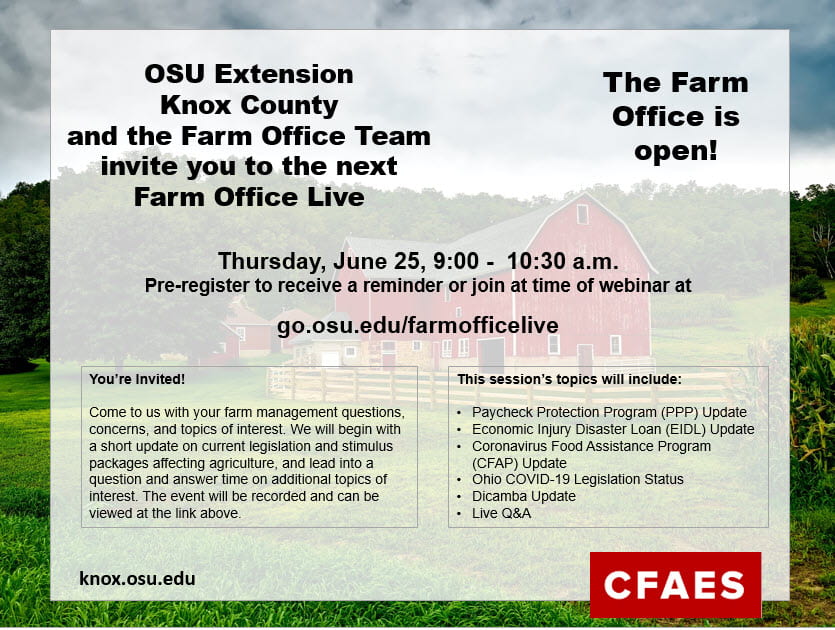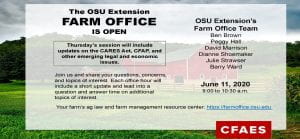Source: Chris Zoller, Extension Educator, ANR, Tuscarawas County
The United States Department of Agriculture (USDA) announced this week it is establishing new programs and efforts to provide financial assistance to farmers negatively impacted by the Coronavirus pandemic.
The new program is called the USDA Pandemic Assistance for Producers and is intended to reach a broader representation of producers than previous COVID-19 aid programs. The program will place a greater emphasis on small and socially disadvantaged producers, specialty crop and organic producers, timber harvesting, as well as support for the food supply chain and producers of renewable fuels.
The USDA Pandemic Assistance for Producers program administered by the Farm Service Agency (FSA) includes four parts. Details below were provided in a news release from USDA.
Part 1:
USDA will dedicate at least $6 billion to develop a number of new programs or modify existing proposals using discretionary funding from the Consolidated Appropriations Act and other coronavirus funding that went unspent by the previous administration. Where rulemaking is required, it will commence this spring. These efforts will include assistance for:
- Dairy farmers through the Dairy Donation Program or other means:
- Euthanized livestock and poultry;
- Biofuels;
- Specialty crops, beginning farmers, local, urban and organic farms;
- Costs for organic certification or to continue or add conservation activities
- Other possible expansion and corrections to CFAP that were not part of today’s announcement such as to support dairy or other livestock producers;
- Timber harvesting and hauling;
- Personal Protective Equipment (PPE) and other protective measures for food and farm workers and specialty crop and seafood producers, processors and distributors;
- Improving the resilience of the food supply chain, including assistance to meat and poultry operations to facilitate interstate shipment;
- Developing infrastructure to support donation and distribution of perishable commodities, including food donation and distribution through farm-to-school, restaurants or other community organizations; and
- Reducing food waste.
Continue reading USDA Announces Pandemic Assistance to Farmers








